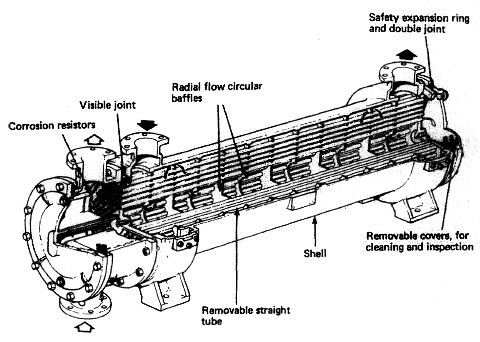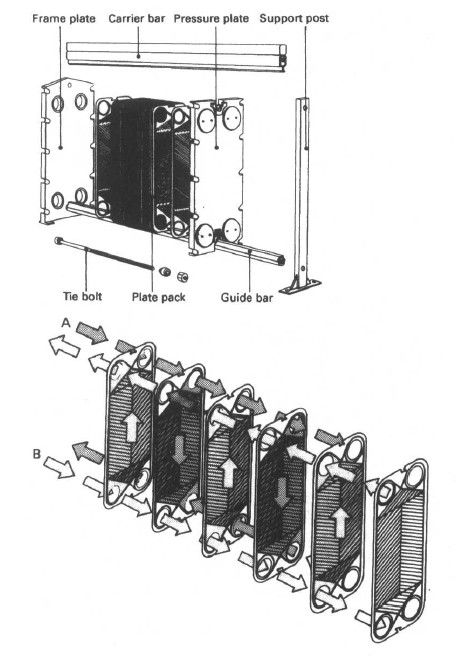
Shell and Tube type Coolers, and Plate type Coolers Operation & Maintenance
Heat exchangers on board ship are mainly coolers where a hot liquid is
cooled by sea water. There are some instances where liquid heating is
required, such as heavy fuel oil heaters and sea water heaters for tank
cleaning. Although being heat exchangers, the main condenser for a
steam ship and the evaporator/distiller are dealt with separately .



